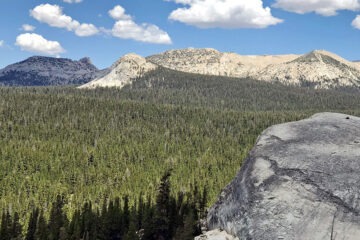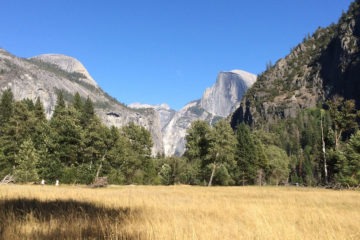In a 19th-century piece on education, Ralph Waldo Emerson drew a connection between “the pace of Nature” (whose secret, he wrote, is patience) and the practice of observing the natural world: “Do you know how the naturalist learns all the secrets of the forest, of plants, of birds, of beasts, of reptiles, of fishes, of the rivers and the sea? … His secret is patience; he sits down, and sits still; he is a statue; he is a log.”
We know not everyone can spend hours as a log or statue, but when you experience Yosemite with our naturalists on an Outdoor or Custom Adventure, you’ll benefit from the knowledge and skills they’ve accrued from years of contemplating and absorbing their Sierran surroundings. You’ll learn to work patience into your own pace, to spot signs of the wild life pulsing in the park’s forests and meadows, to see how intricate ecosystem elements fit together, and to minimize your impact as you hike, camp and observe.
Anytime you hit the trail with our naturalists, whether for a few hours of nature journaling, a full-day hike or an overnight trip, you’ll deepen your understanding of the wild, complex web of life that stretches across the park, out into the broader Sierra and beyond. Scroll down to get a glimpse of some of the animals you might learn about, hear, or see on your next Conservancy adventure! (Many of the photos below were taken on trips with our naturalists; others feature places that you may visit during a guided walk, day hike or backpacking trip.)
BIRDS
Take out your headphones. Peer up into the trees. With a bit of listening and some patient looking, you’ll probably spy at least one of Yosemite’s more than 160 resident and migratory bird species. Curious about the trills and taps you hear along the trail, or the flash of yellow feathers you spotted overhead during a snack break? Ask your naturalist guide to help you identify birds by sight and sound. And if you’re looking for an avian-specific adventure, join one of our experts for a bird-watching walk.
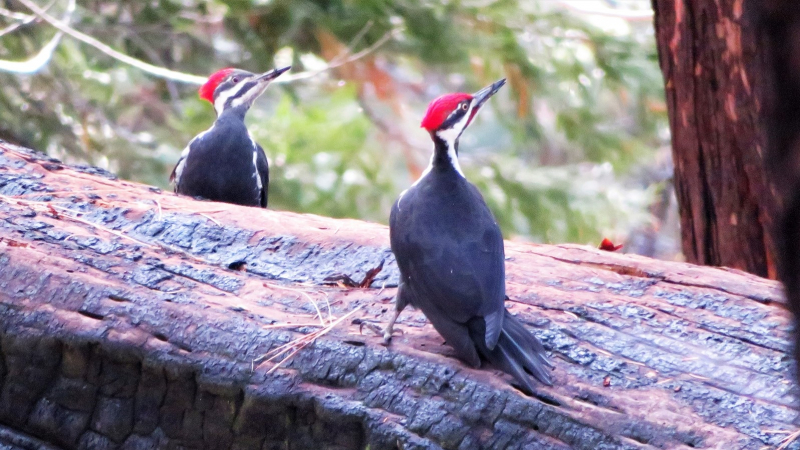
What’s that? Who’s over there? This pair of pileated woodpeckers paused their tree-tapping in a Yosemite sequoia grove to scope out an off-camera sight. You might hear these large red-crested birds drumming and drilling at mid-elevations as they search for insects and mark their territory. Bring some binoculars to get a close look without disturbing the birds, and if you’re extra curious about these winged woodland percussionists, look for our autumn woodpecker walk on the Outdoor Adventures calendar.
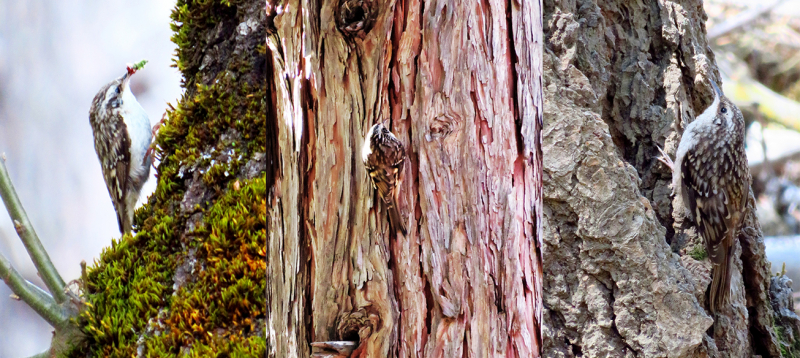
These brown creepers were spotted in Mariposa Grove and on the south rim of Yosemite Valley, but the species has a wide elevation range (4,000 feet to 10,000 feet), so listen for their high-pitched songs and calls in other areas, too. They tend to blend in with their arboreal background; if you see something that resembles a piece of bark moving up a tree, look a little more closely — it could be a brown creeper, hunting for bugs. (While you’re watching trunks, keep an eye out for white-breasted nuthatches, too, which often work their way down trees, headfirst.)
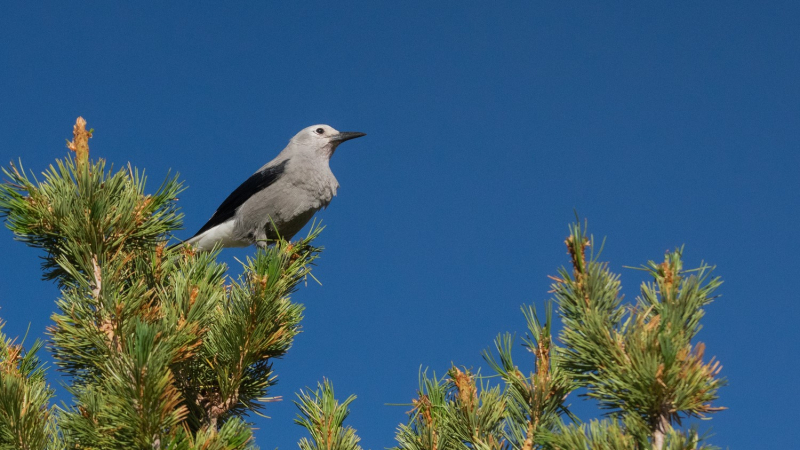
When hiking in the Yosemite Wilderness, it’s tempting to keep your eyes trained on the trail or gazing out at mountain views, but don’t forget to tilt your head back once in a while to see what’s happening overhead! During a 2018 trip in eastern Yosemite, an Outdoor Adventure participant got to watch this Clark’s nutcracker find a piney perch. These black-winged birds play a special role in the high country ecosystem: Whitebark pines rely on the nutcrackers to disperse their seeds; the seeds, in turn, provide energy-rich nutrition for the nutcrackers.
REPTILES & AMPHIBIANS
Toads and turtles might not be the first animals you associate with Yosemite, but the park provides habitat for nearly three dozen amphibian and reptile species, including several special-status animals. Watch for sometimes scaly, sometimes slippery creatures on guided hikes near lakes and rivers, in wet meadows (stick to the trail to avoid trampling plants and soil!), and on sunny rocks. For an in-depth look at some of Yosemite’s water-loving wildlife, check our calendar for summer adventures focused on aquatic ecology.
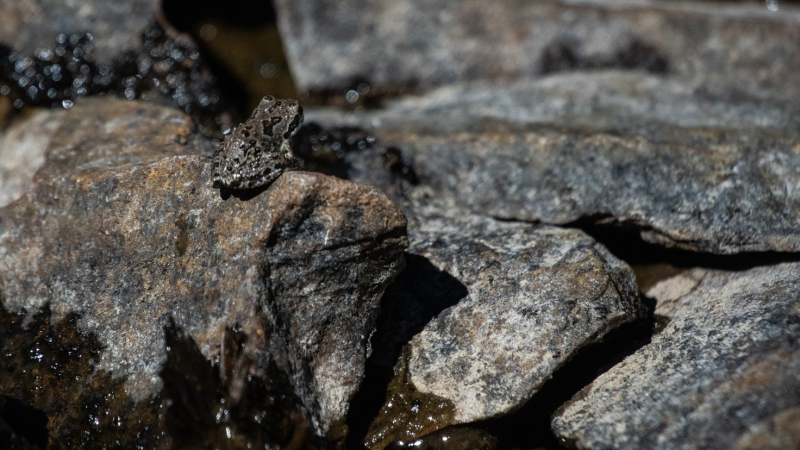
Some of Yosemite’s resident amphibians can be tough to spot. Take this treefrog: small, jumpy (literally), and perfectly camouflaged to match its rocky seat. As you hike with a naturalist guide, though, you might slow your pace, observe your surroundings in a new way, and start noticing subtle movements or changes in texture that you’d otherwise overlook — and then maybe, like the Outdoor Adventurer who captured this shot on a high country backpacking trip, you’ll catch sight of a tiny amphibian!
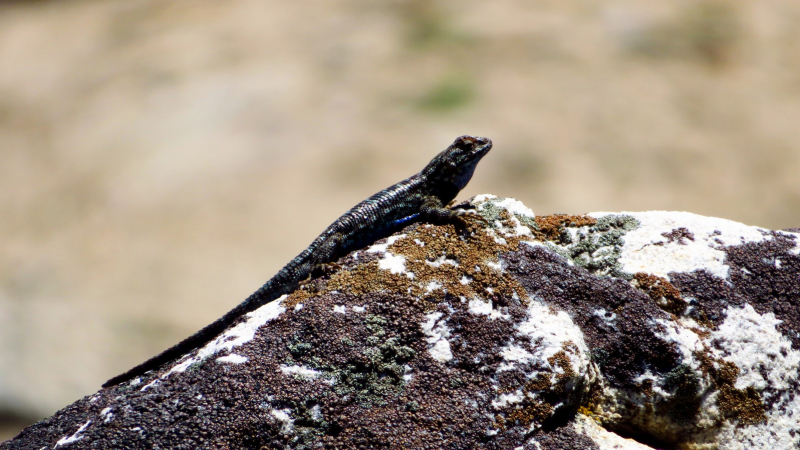
Western fence lizards like to soak up the day’s rays, making them a more common sight than their shade-seeking peers. These blue-bellied reptiles have a wide habitat range — see if you can catch a glimpse of one stretched out in the sun or darting across rocks on your next hike. Taking a guided walk in the Valley? You might learn about another sunbathing species, the western pond turtle, which was recently reintroduced to that part of the park through a grant-funded project.
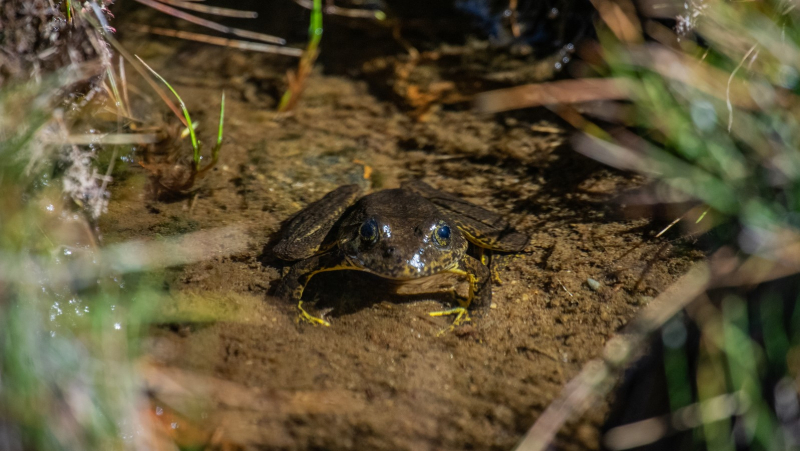
Unlike western fence lizards, Sierra Nevada yellow-legged frogs live in a limited range: They’re endemic to high-elevation lakes in their namesake mountains. Populations of these alpine-dwelling amphibians plummeted in the 20th century, but are rebounding, thanks to years of research and reintroductions. If you’re heading to high country lakes on a guided day hike or backpacking trip, you might have a chance to observe these once-common amphibians. (This one swam into view during an Outdoor Adventure in the eastern Yosemite Wilderness.)
MAMMALS
About 90 mammal species make their homes in the park, from 250-pound black bears to Mount Lyell shrews weighing under an ounce. Almost anywhere you go in Yosemite, you’ll be passing through mammal territory. When you hike with a naturalist guide, you’ll get to learn about some of the hair-bearing species that live in different parts of the park, and how to identify the signs they leave behind, like paw prints, scratched bark and scat.
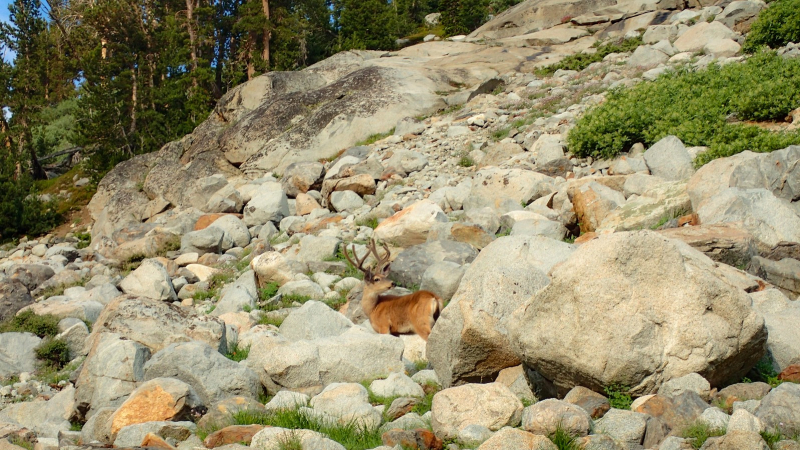
Mule deer are common throughout the park. You might see them grazing in Yosemite Valley, napping at the base of a giant sequoia, or, like this buck, navigating a rocky slope in the high country. An Outdoor Adventure participant captured this photo during a summer backpacking trip to Mount Lyell; the trek was officially focused on glacial ice, but included opportunities to observe wildlife along the way. As with any animals, watch deer from a safe distance, and don’t offer them trail mix (or other food).
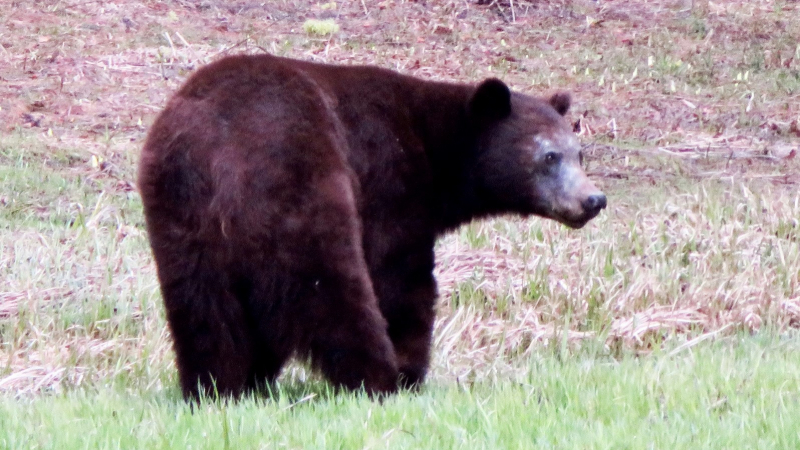
Whether or not you see a black bear on an Outdoor Adventure (this one was spotted on a spring day at Crane Flat, home to some of our bird-watching outings), or come across tell-tale berry-filled scat and tree markings, you’ll learn about the importance of using bear-proof lockers and canisters. Storing food and other scented items securely helps bears stick to a wild diet … and helps ensure that you’ll still have your snacks and sunblock when you wake up in the morning.
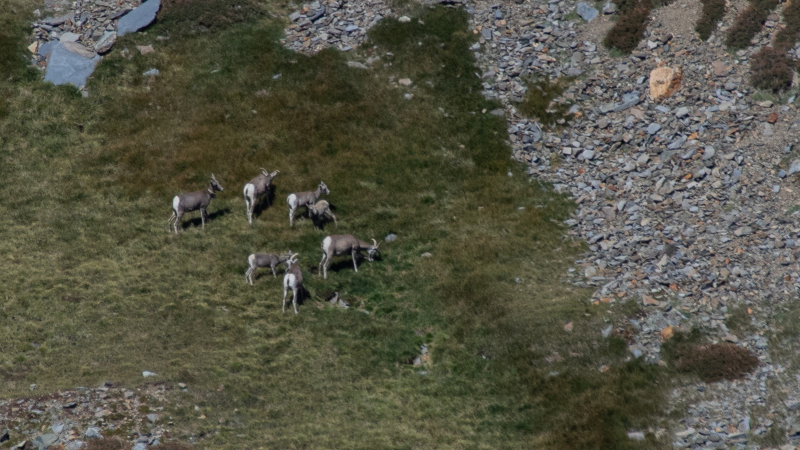
After a seven-decade absence, Sierra Nevada bighorn sheep were reintroduced to Yosemite’s eastern edge in the 1980s; in 2015, biologists released a herd in the park’s Cathedral Range. Due to their small population size and penchant for remote, rugged terrain, you’re unlikely to encounter a wild sheep in Yosemite, but your chances of observing these animal alpinists (from a distance, using powerful scopes) go way up when you join a summer backpacking trip with bighorn experts. Our 2019 bighorn backpacking trip is full, but you can join the waitlist, check out our other high country hikes, and support grants to help this remarkable species continue making a comeback!
INSECTS
If the words “insects” and “hiking” bring up visions of swatting away mosquitoes every time you stop for a water break, we hear you. The Sierran skeeter season can create some, er, irritating moments, but don’t let that spoil your opinion of Yosemite’s thousands of arthropods! These buzzing, hopping, pollinating critters play a critical role in the park, and we guarantee that you’ll spot and learn about at least a few along the trail.
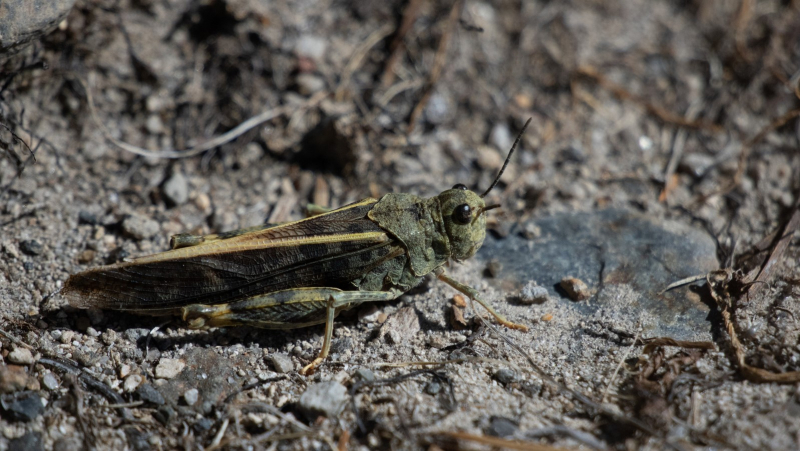
See a bug? Use your camera to zoom in and get a closer look! You’ll notice the colors, patterns and textures (not to mention legs, eyes and antennae) that aren’t easy to see with the naked eye — and that can make arthropods downright beautiful.
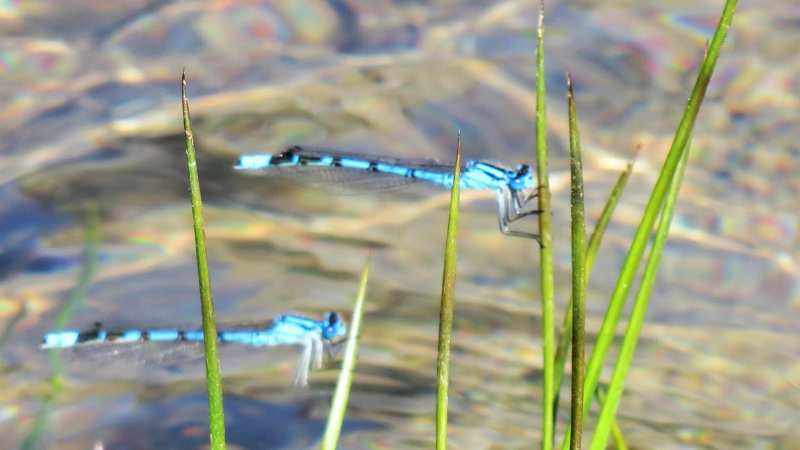
What’s that colorful horizontal twig? If it has wings, it’s probably a dragonfly or damselfly, a member of the Odonata (“toothed ones”) taxonomic order. Look for these carnivorous insects near water and wetlands, warming their wings in the sun, hunting fellow arthropods, or showing off their strengths in flashy courtship moves.
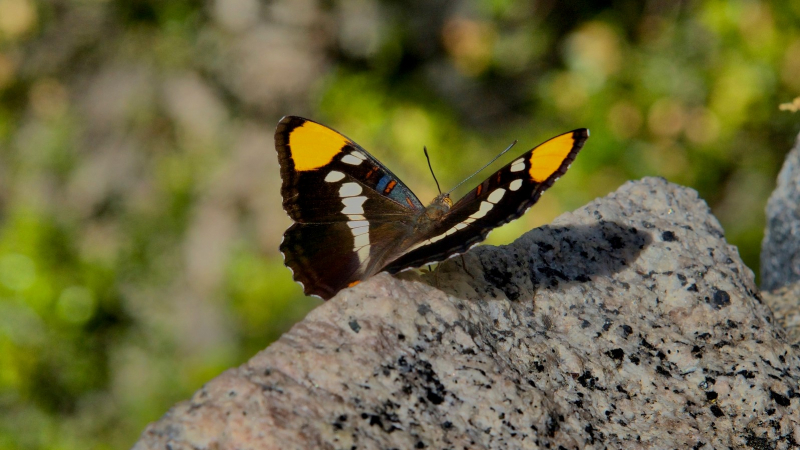
Butterflies are found throughout Yosemite. Some flutter in Valley meadows, others brave alpine conditions above 10,000 feet. Wherever they spend time, butterflies play key ecosystem roles as pollinators and as food sources for other animals. Like the rest of the insect world, butterflies are astonishingly diverse — dozens of species have been documented in Yosemite — but you can use wing colors, patterns and location to narrow down which species you’re observing. Ask your naturalist guide for insights! (And if you’re eager to dive into lepidopteran identification, look for the Yosemite Butterflies mobile app, which was developed through a 2018 Conservancy-supported project.)
Some of Yosemite’s more than 400 vertebrate and countless invertebrate species cross paths with humans relatively regularly; others stay largely out of sight. We can’t predict which wildlife you might see in the park*, but we can safely say that if you go on a short walk, day hike or backpacking trip with one of our naturalist guides, you’ll have the chance to learn about the animal world, how to observe and protect wildlife, and how to embrace “Nature’s secret” — patience — as you make your way across meadows, up mountains and along riverbanks.
What wildlife have you seen, heard and learned about on Conservancy adventures? Share your stories and photos in our Flickr group, or on social media (we’re @YosemiteConservancy on Facebook and Instagram, and @YoseConservancy on Twitter)!
* If you pull out a sandwich at a picnic table in the Valley, the odds are good that a Steller’s jay or squirrel will appear. Keep your meal out of the reach of curious beaks and paws, and be sure to clean up any crumbs!
Above: A pair of mule deer in the eastern Yosemite Wilderness, spotted during an August 2016 Yosemite Conservancy Outdoor Adventure. Photo: Ted Hunting

